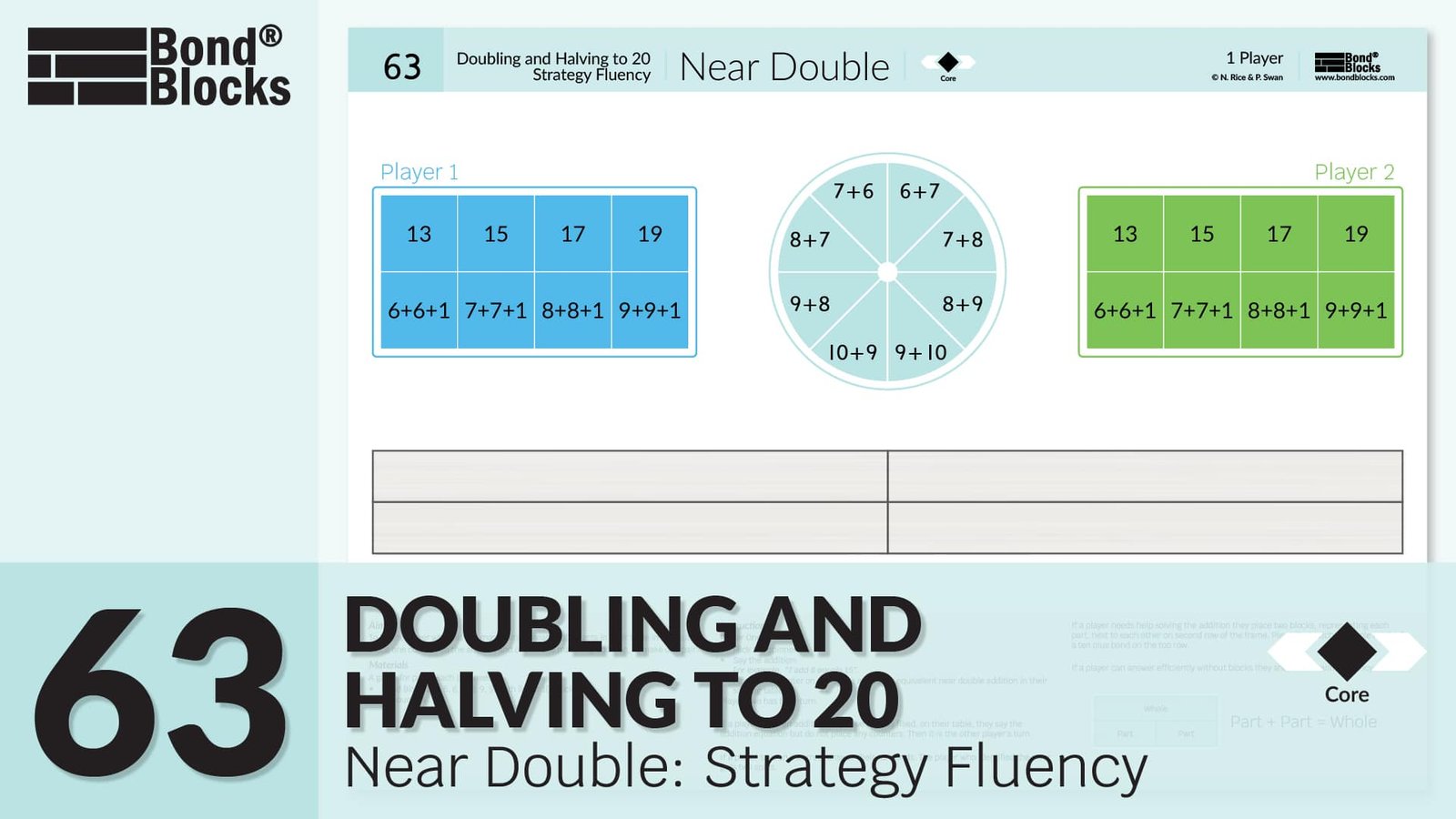63) Near Double
Doubling and Halving to 20: Strategy Fluency

Mathematics
To develop fluency using the strategy of near double addition, adding one more than the double bonds of 6, 7, 8, 9.

Prior knowledge needed:
- Double 6, 7, 8, 9 bonds
- The commutative property of addition: two parts can be added in any order without changing the size of the whole.
- The associative property of addition: three or more parts can be added in any order without changing the size of the whole.
Language
- double bond
- near double
- one more
- addition as “add”
- equals


Differentiation
A little easier
Sequence: step by step
Place Bond Blocks on the part-part-whole frame to calculate the near double. For example,

Working Memory Support: desk visual
Click to download the Double Bonds to 20 Part-Part-Whole Diagrams desk visual.

These part-part-whole diagrams can be stuck to the top of student’s desk, as a desk visual, until students are fluent recalling these facts. Students with memory or processing difficulties can benefit from having visuals as permanent prompts.
Click this link to read Teacher Notes for more ideas about “Using Part-Part-Whole Desk Visuals” to support students.
Activity 20
Activity 20, Doubling and Halving to 10: Strategy Fluency is the same activity but for wholes up to 10. This is significantly easier.
Progression
After completing Bond Block activities to this point students have partitioned two-digit wholes to 20 using place value and double bonds. The next chapter of activities focuses on the remaining two-part, single-digit bonds. For example, 15 as 9 and 6. Go to
Activity 64
Bonds of 11 to 20: Addition, Lulu
